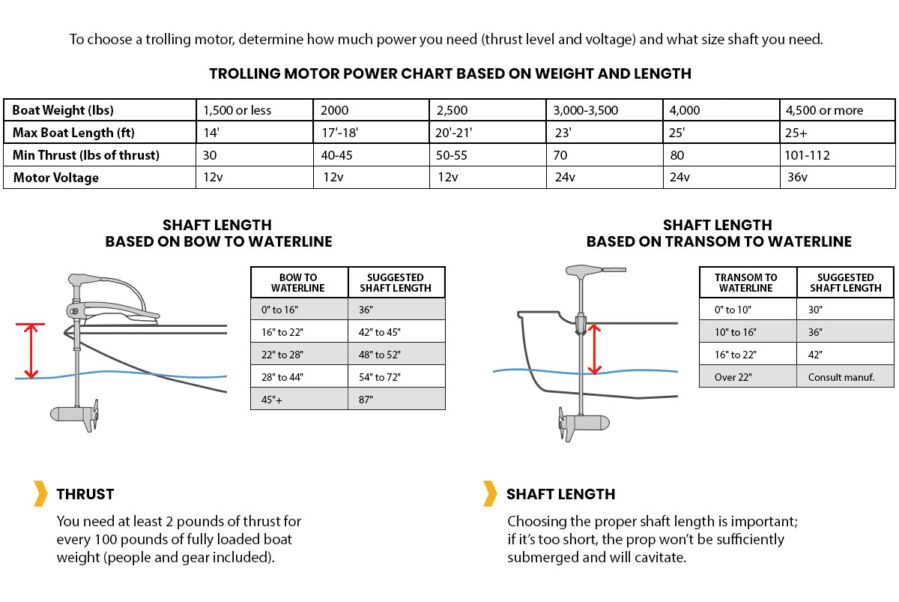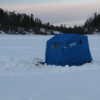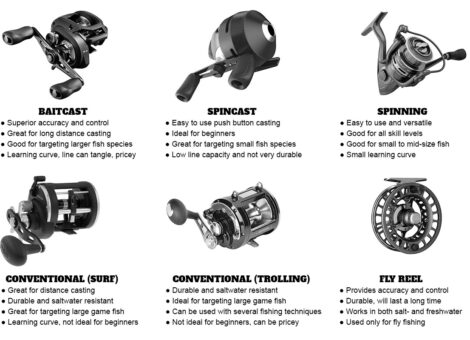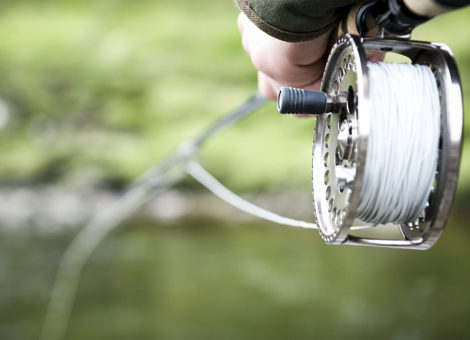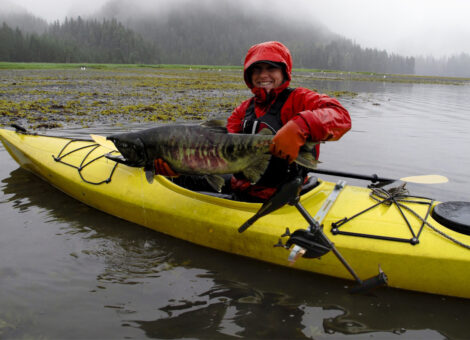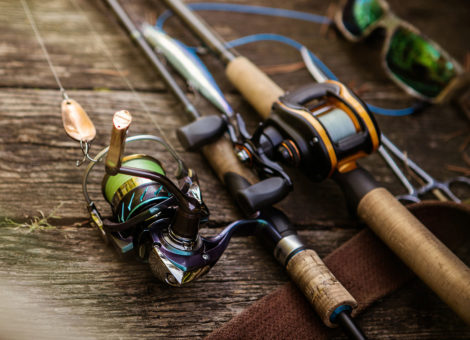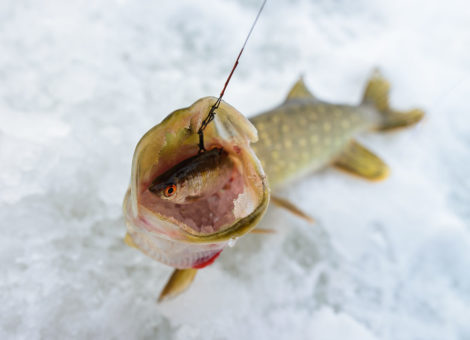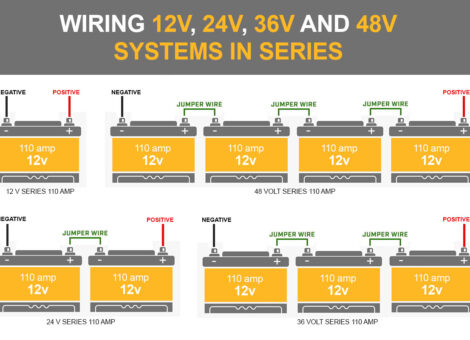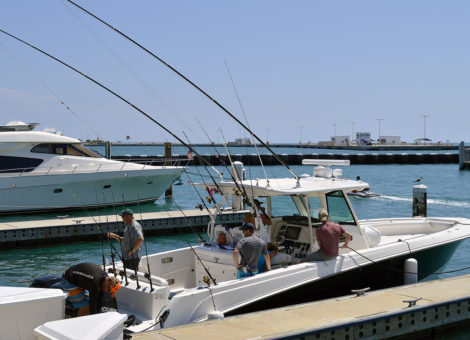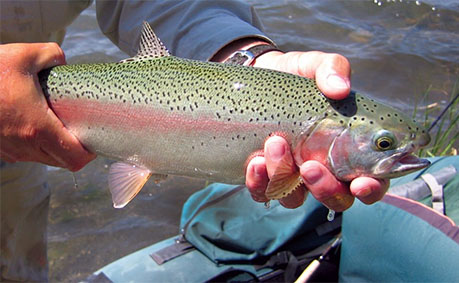When selecting a trolling motor, there are two important considerations: thrust and shaft length. Having enough thrust will ensure you can maneuver and propel your fishing boat at a sufficient speed. Having the correct shaft length will ensure your trolling motor does not cavitate and scare away fish.
The following size charts will help you determine thrust and shaft length requirements so you can choose a trolling motor for your boat.
Determine Thrust Requirements
Boat size—weight in particular—is the most important factor to consider when choosing a trolling motor. As a rule of thumb, a fishing boat requires 2 pounds of thrust for ever 100 pounds of weight (including equipment, gear, and passengers).
Having adequate thrust ensures you have the power to move and maneuver your boat while fishing. Thrust is particularly important if you’re motor comes with a i-Pilot GPS system designed to maintain your boat on a fixed position or course. Insufficient thrust will create performance issues and overwork your motor.
The following size chart will help you determine trolling motor thrust requirements based on boat weight and length.
| Boat Weight | Max Boat Length (ft) | Min Thrust Level (lb of thrust) | Motor Voltage |
|---|---|---|---|
| 1,500 or less | 14' | 30 | 12v |
| 2000 | 17'-18' | 40-45 | 12v |
| 2,500 | 20'-21' | 50-55 | 12v |
| 3,000-3,500 | 23' | 70 | 24v |
| 4,000 | 25' | 80 | 24v |
| 4,500 or more | 25'+ | 101-112 | 36v |
Drag is another important consideration when determining thrust requirements. Drag can be created by water or wind and is impacted primarily by a boat’s design.
A boat with a deep-V hull produces more drag in the water when turning than a boat with a flat bottom—such as a flats boat or Jon Boats. Consequently, it requires more thrust to maneuver a deep-V hull boat than a flat bottom boat.
A boat with a shallow draft but large deck area above the water line, such as a Pontoon Boat, won’t experience as much water drag, but it will experience air drag. Even a small breeze can push a pontoon boat off course. A boat that creates air drag requires more thrust to maneuver and maintain a fixed position.
Weather conditions like wind and current also factor into power requirements. If you’re going to be working against the wind or current, you’ll need a trolling motor with a little bit more thrust.
Select the Shaft Length
Shaft length is the second consideration when selecting and setting up your trolling motor. An incorrect shaft length will cause an electric trolling motor to cavitate loudly and scare away fish. When determining correct shaft length, the general rule is that the top of the motor foot should be covered by a minimum of 12″ of water.
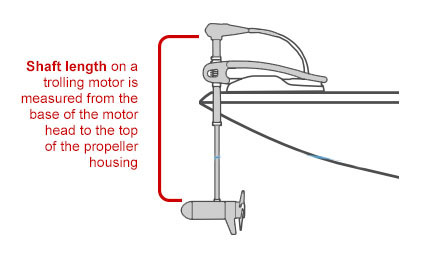
A general approach to determining shaft length is to measure from the mounting surface of the bow or transom where the motor sits to the surface of the water. Now take that measurement and add 16″ (for MotorGuide) or 20″ (for Minn Kota) for a recommended minimum shaft length. (For other models, check your buyer’s guide.) If you will regularly fish in rough water, add 5″ to the overall measurement. Add 12″ to the measurement if you will be using a hand-controlled trolling motor while standing.
Use the following charts to determine minimum recommended shaft length based on bow to waterline and transom to waterline measurements.
Shaft length for bow-mount trolling motors
It’s more critical to determine the correct shaft length with bow-mount trolling motors compared to transom mount motors. The distance between the bow of a boat and the waterline tends to vary much more from boat to boat than the distance from the transom to the waterline.
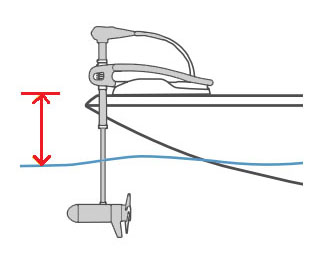
For bow-mount motors, measure the distance from the mounting surface on the bow of the boat to the waterline. Then add 22″ to this measurement to get the minimum required shaft length.
| Bow to Waterline (inches) | Recommended Shaft Length (inches) |
|---|---|
| 0 to 16 | 36 |
| 16 to 22 | 42 to 45 |
| 22 to 28 | 48 to 52 |
| 28 to 44 | 54 to 72 |
| 45+ 87 | 87 |
If you’ll regularly fishing in rough waters or in the ocean, add 25″-27″ to your mounting surface to waterline measurement instead of 22″. The extra length will help ensure the prop remains submerged in choppy water.
Shaft length for transom-mount trolling motors
The shaft length for transom mount motors is more universal and less critical than with bow mount motors, but you still want to make sure it’s correct.
Again, as a general rule you want the top of the motor submerged at least 12″ under the water’s surface. This will ensure adequate power and that the motor will not cavitate.
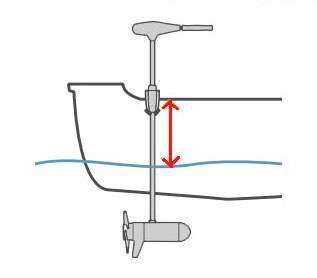
The following chart will help you determine the correct shaft length for your transom mount trolling motor.
| Transom to Waterline (inches) | Recommended Shaft Length (inches) |
|---|---|
| 0'' to 10'' | 30'' |
| 10'' to 16'' | 36'' |
| 16'' to 22'' | 42'' |
| Over 22'' | Consult factory |
When trying to decide between two shaft lengths, always go with the longer. You do not want to end up with a shaft that is too short. You can raise the shaft of the motor if it ends up too long, but you won’t be able to shorten it much. And once you put the motor in the water, there’s no returning it.
When making bow and transom mount to waterline measurements, make sure your boat is fully weighted down as it would be when fishing. This will ensure your measurement is accurate.
Size Charts by Boat Type
A growing number of anglers are using electric trolling motors to power and propel their fishing kayaks. Review specific kayak trolling motor size charts for details on determining thrust, battery, and shaft length requirements for fishing kayaks by weight, size, and type.


